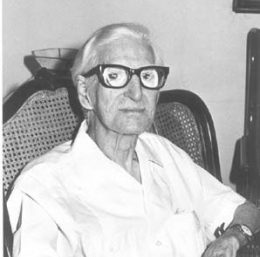His long existence that brought him closer to a century of life, the jocularity of his wit, the intense life he led within the Cuban sociocultural context, and his culture, a universal and overwhelming culture, made José Zacarías Tallet a personality and at the same time time an almost romantic character, whose imprint survives beyond time.
Journalist, poet, teacher, lover of history, Tallet is inserted within a decade, that of the '20 of the last century, of an extraordinary intellectual wealth with citizen interests that branch out into Cuban politics and society. It is the decade of irruption in some cases, of consolidation in others, of emblematic authors: Rubén Martínez Villena , Jorge Mañach , Alejo Carpentier , Enrique Serpa , Juan Marinello , José Antonio Fernández de Castro ...
If we talk about the history of Cuba, since the signature of José Zacarías appears in the Protest of the Thirteen and in the founding meetings of the Retail Group , he was a member of the Anti-Imperialist League and one of the promoters of the José Martí Popular University .
He also taught at the Manuel Márquez Sterling Professional School of Journalism. However, Tallet published one book of poetry, The sterile seed , in 1951. Over the years expand his bibliography of books from other genres, including Curiosities of History and Avoid Bloopers and gazapitos in two volumes appeared in 1985, when its author was 92 years old. Tallet received the National Prize for Literature in 1984 and the University of Havana awarded him the doctorate Honoris Causa.
Less well known is Tallet's facet as a translator , about which this little-known story is about. It is narrated by its protagonist, that is, Tallet. And thanks to it, we are in a position to know who to thank for the name by which today - Cubans in particular - we know a famous mouse that has survived in the memory of many generations of children who enjoyed its cartoons or comic strips, both printed and film. .
The dates preceding the fall of the dictator Gerardo Machado (1933) passed and Tallet worked as a journalist for the newspaper El Mundo , where he also headed the Productions Department.
At that time, by contract, the Mickey Mouse comics , which came from the United States , were to be published in Cuba . Here the texts that corresponded to go on the balloons would be translated and then printed. The matrix in colors came from there. Then, for the first time, the Mickey Mouse comics were going to be published in Cuba , which had been so well received in the neighboring country of the North.
When I was faced with the fact of translating Mickey , well only Miguelito could fit , as it was later translated in all the other Spanish-American countries, but it seemed to me that it would not fit, and then I preferred to make a semi-phonetic translation, that is, of Mickey , well Miquito . And this name stuck. And it is in Cuba the only country where Walt Disney's mouse is called like that: Miquito ; Well, in the rest, as I said, it is Miguelito .
Let us clarify here that Tallet had studied some studies in New York and was fluent in the English language. This story reveals how creative the work of the translator can be and is accompanied by the skills of the writer and, above all, the effort to deliver a work with his own stamp.


Deje un comentario